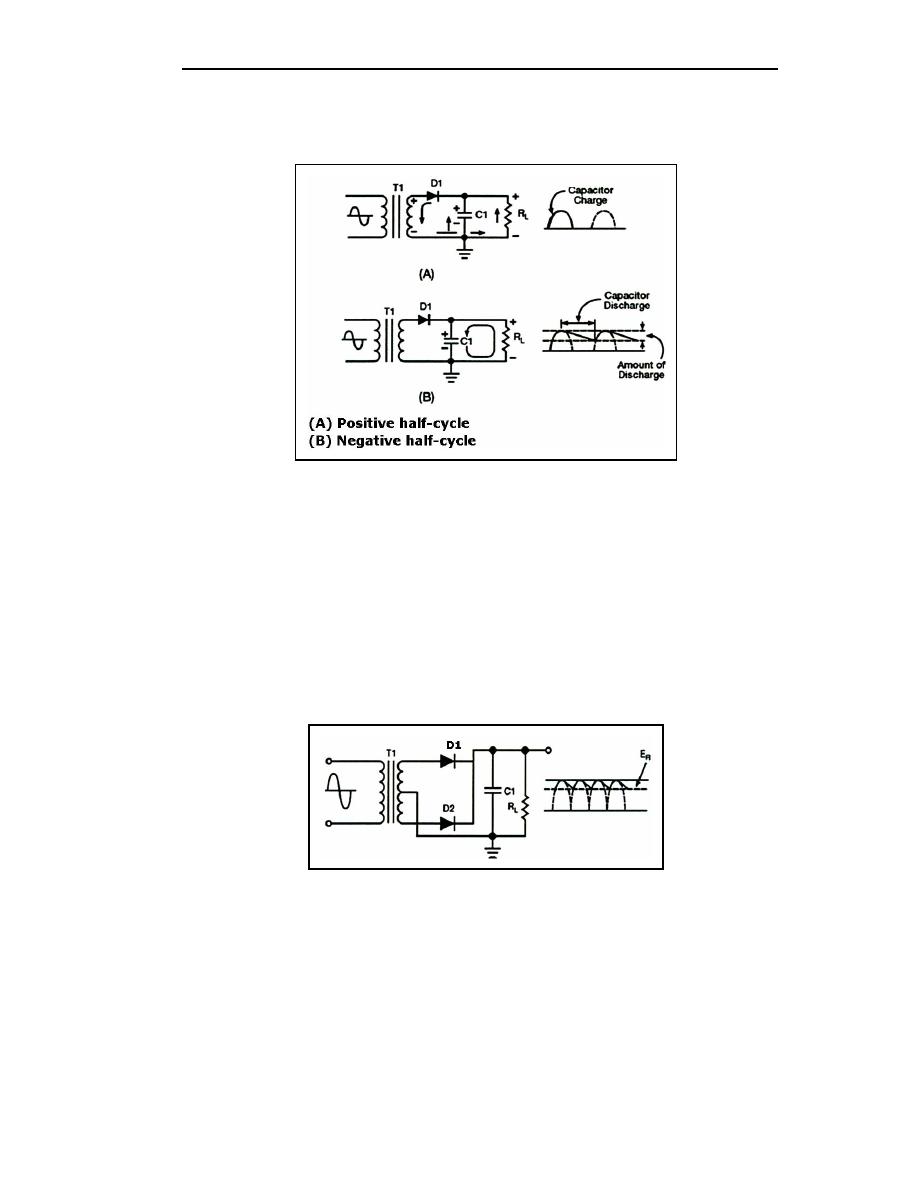
TC 9-62
exceeds the potential on the cathode (the charge on C1), the diode again conducts and C1
begins to charge to approximately the peak value of the applied voltage.
Figure 4-17. Capacitor Filter Circuit (Positive and Negative Half Cycles)
4-45. After the capacitor has charged to its peak value, the diode will cut off and the
capacitor will start to discharge. Since the decrease of the AC input voltage on the anode is
considerably more rapid than the decrease on the capacitor voltage, the cathode quickly
becomes more positive than the anode, and the diode ceases to conduct.
4-46. Operation of the simple capacitor filter using a full-wave rectifier is basically the
same as that discussed for the half-wave rectifier. Figure 4-18 shows that because one of
the diodes is always conducting on either one of the alternations, the filter capacitor
charges and discharges during each half cycle. Notice that each diode conducts only for
that portion of time when the peak secondary voltage is greater than the charge across the
capacitor.
Figure 4-18. Full-wave Rectifier (With Capacitor Filter)
4-47. Remember that the ripple component (ER) of the output voltage is an AC voltage
and the average output voltage (Eavg) is the DC component of the output. Since the filter
capacitor offers relatively low impedance to AC, the majority of the AC component flows
through the filter capacitor. The AC component is therefore bypassed (shunted) around the
This statement can be clarified by using the below formula for XC in a half-wave and full-
wave rectifier.
4-16
TC 9-62
23 June 2005



 Previous Page
Previous Page
